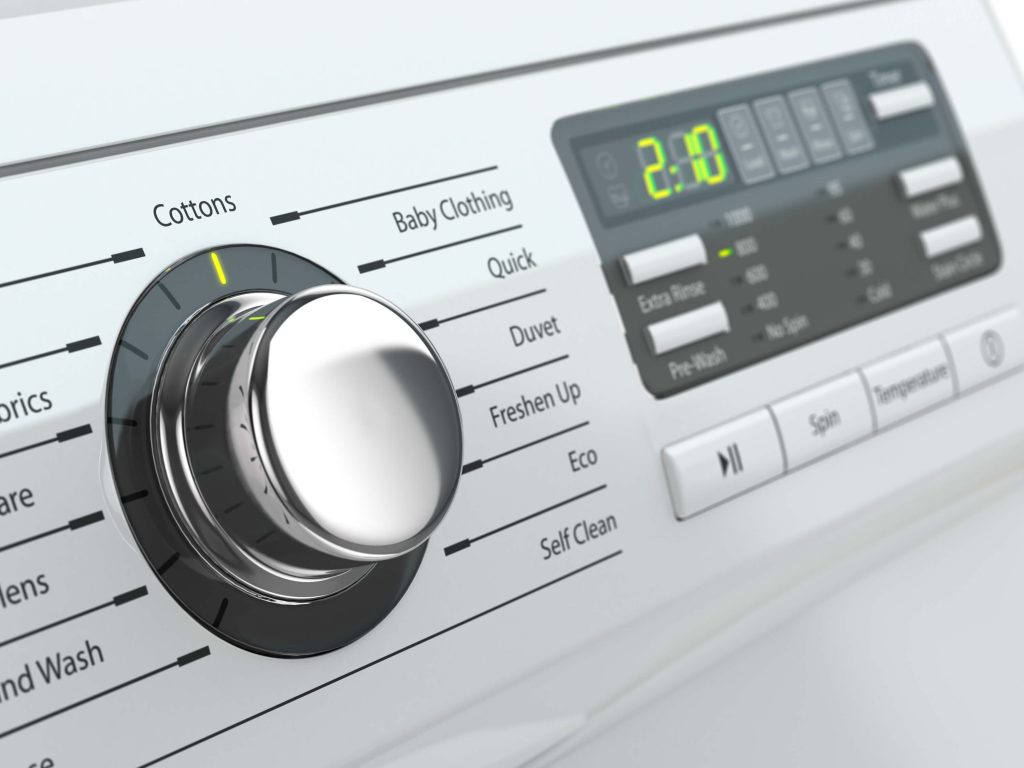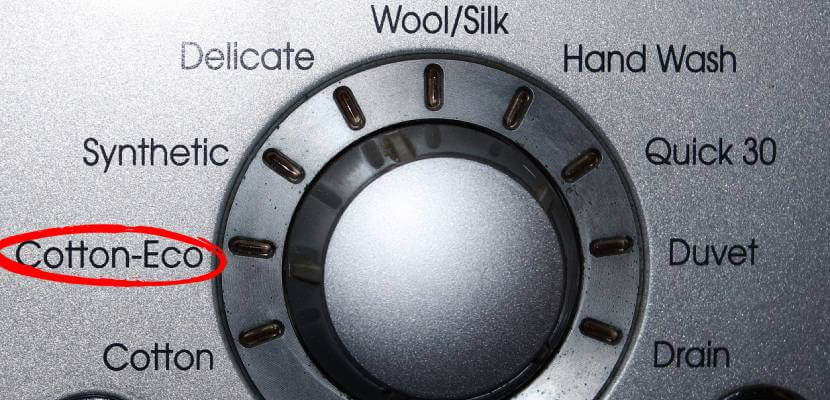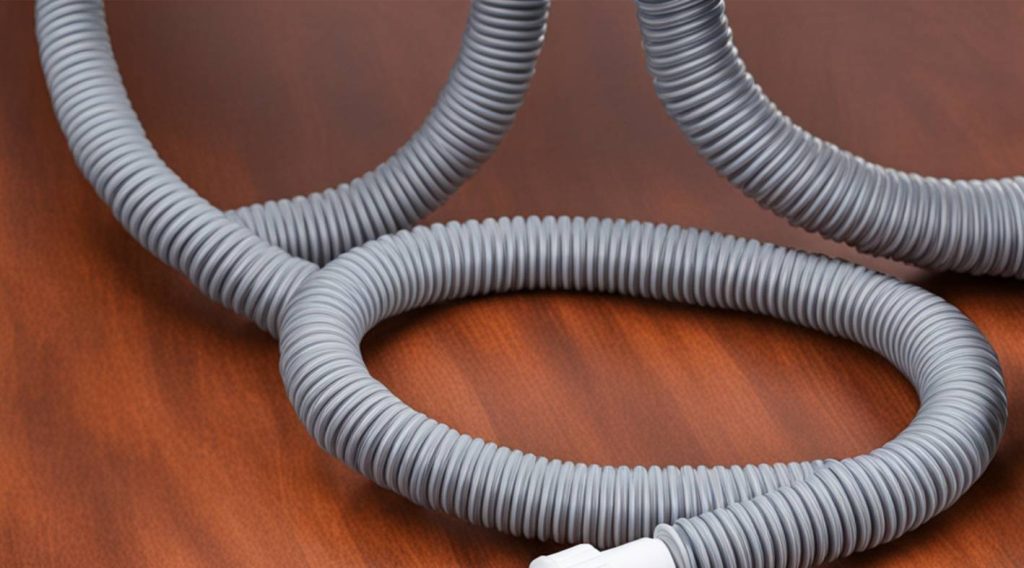
Why Your Washing Machine Keeps Adding Time
If your washing machine takes longer than the time it originally displayed when you first loaded it, it can be annoying. Especially if you have two or three wash loads to do that day.
You might even be worried that the machine has developed a fault and will need to be repaired or replaced. Before you contact a plumber or washing machine technician, keep reading.
There’s usually a simple reason why your washer adds time to the cycle once it has started which we look into in this article.
How Does The Washing Machine Timer Work?

Modern washing machines are far different in the way they operate than washers of 10 or 20 years ago. Modern washers rely on sensors to determine the length of the cycle based on a number of factors.
The Washer Uses Weight Sensors To Estimate The Cycle Time
Which means that as soon as you place the laundry in the drum, the sensors weigh the load. Based on how much the laundry in the drum weighs, the washer displays an estimated cycle time.
It also uses the weight of the load to determine how much water will need to be used during the wash cycle.
The Timer Will Change When You Select A Setting

After the laundry has been placed in the drum and the initial estimated time has been displayed, you then select a wash cycle or programme. This will affect the estimated time of the cycle.
For instance, selecting the eco wash setting will alter the time used for washing and rinsing. Which means the timer will now display a new estimated time based on the cycle selected.
The Moisture Content In The Clothes Can Affect The Timer
If the clothes were damp or have been pre-soaked before being placed in the washer’s drum, this can affect the estimated duration of the cycle. Insufficient moisture levels or more moisture than average can both cause the estimated duration to be off.
Most modern washers do this by weighing the load again and comparing the weight at the start of the cycle. Others are more sophisticated and determine the moisture content by scanning the items in the drum.
If the sensor reveals that the laundry is heavier than it should be at this stage in the cycle, the timer will add more time. If the laundry is lighter than it should be, the timer will reduce.
The Detergent Level Can Affect The Timer

Some of the sensors in modern washing machines can detect the amount of detergent or soap suds remaining in the drum once the rinse cycle has started.
More soap suds than expected will result in extra time for rinsing. Less suds will shorten the rinse time. To help prevent this from happening you should always use the correct type of detergent for your machine in the right quantity.
The Level Of Dirt Can Affect The Timer
The sensors in your washing machine can detect the level of dirt on the laundry and adjust the wash time accordingly. Heavily soiled clothes will require a longer wash cycle to remove all of the dirt.
Clothes that are not too badly soiled will only require a shorter wash cycle. The machine will not know how dirty the laundry is when it displays its initial estimation of time.
Once the soil level has been detected, a new time will be displayed reflecting the length of time needed to get the laundry clean.
The Temperature Selected Can Affect The Timer
When you choose a water temperature for the wash load, the machine needs to heat the water to that level. This will affect the estimated time and could change it by a considerable amount depending on the time of year.
For instance in the colder, winter months the temperature of the water supplied to your home will be colder than that same water supplied in warmer, summer months. This temperature difference will definitely affect the accuracy of the timer.
The Fabrics Can Affect The Timer

As the moisture content can affect the timer, the thickness of the fabrics being washed can make a difference as well. Thicker fabrics like denim or towels tend to hold more moisture which increases the weight of the load after the wash cycle has started.
This will lead to the timer altering to account for this extra moisture content. On the other hand a drum full of synthetic fabrics which don’t absorb moisture will need less time on the spin cycle to remove moisture.
An Imbalanced Load Can Affect The Timer
Once the drum on your machine starts turning, it can detect whether the load is balanced or not. If the load is imbalanced, with too much weight concentrated on one side, the machine will take time to try to adjust the balance.
It does this by turning the drum one way and then the other in an effort to dislodge certain items and reposition them in a way less likely to cause any damage to the drum or other internal components.
This can increase the time by a considerable amount until the load is more balanced.
Mechanical Faults That Could Affect The Timer

So far we’ve looked at sensor related issues with the timer which we have seen are not really problems, just annoying. However, in some cases, there can be a mechanical problem causing your washer’s timer to be so inaccurate.
Let’s look at some of the more common reasons why your washing machine’s timer is so wrong.
Low Water Pressure
If your washer is suffering from low water pressure, it can’t fill with water as fast as it should. This will make any estimated time incorrect. There are several things that can cause low water pressure in a washing machine, which include;
- Twisted Inlet Hose
- Inlet Tap Not Fully Opened
- Inlet Valve Defective
- Water Authority Issues
Let’s take a closer look at each of these issues;
Twisted Inlet Hose
All of the water that is used in your washing machine enters through the inlet hose. The hose needs to be clear and free from any form of blockage to allow sufficient water into the drum for the machine to operate correctly.
If the inlet hose has become twisted or kinked it will impede the flow of water and could cause the timer to alter mid-cycle. You will need to inspect the inlet hose and straighten any twists.
Inlet Tap Not Fully Opened
At the end of the inlet hose, connected to the home’s water supply you will find a tap. This controls the flow of water into the washer. If this tap has been recently turned off it might not have been fully opened when it was turned back on.
Or the tap may have been accidentally knocked to slightly less than fully open. Either way, this could be enough to make the timer alter mid-cycle.
Inlet Valve Defective
The water that enters your washer is controlled by the water inlet valve. This device gets commands from the control board on when to open and allow water into the appliance and when to close to cut off the water supply to the appliance.
Over time, the inlet valve could become defective or develop a fault. This could lead to not enough or too much water entering the drum of the washer.
If either of these occur, the timer would change to reflect the new circumstances.
Water Authority Issues
In some cases, the low water pressure is out of your control and is due to issues with the supply. You can check that your water is of sufficient pressure by filling a 1 gallon (4.5 litre) bucket with water from the cold tap in your kitchen.
If it takes 30 seconds or less to fill, the pressure of the water supplied to your home is fine. If it takes longer than 30 seconds to fill the bucket, you will need to contact your local water authority.
Drainage Problems

Another factor that could affect the estimated timer function on your washer is problems with drainage. If the washer isn’t draining as well as it should, the timer will change to reflect this. Problems connected to drainage include;
- Clogged Filter
- Clogged Drain Hose
- Defective Drain Pump
- Blocked Drain Pipes
Let’s take a closer look at each of these issues;
Clogged Filter
You should ideally check and clean the filter on your washing machine at least once a month. The filter is typically located on the lower front of the washer behind a flap (consult your user manual for model specific locations and instructions).
Once you have located the filter, open the flap and place a bowl or shallow tray underneath. Now twist the filter anti-clockwise to undo it, take care as there is almost certainly going to be a small amount of water that gushes out.
If the filter is clogged, there could be lots of water which will need to be cleared gradually. The flow can be controlled by allowing water out until the bowl is full then closing the filter (turn it clockwise to close). Repeat until all of the water has been removed.
Remove the filter and run it under a fast running tap to remove any lint, hairs, pieces of cloth or other debris. You should then check inside the filter housing for any coins, nails, screws, hair clips, or other foreign bodies that could be causing the blockage.
Turn the impeller which is located inside the filter housing with your finger to check that the pump isn’t blocked. Once you’re satisfied that there is no blockage and the filter is clean, replace it and ensure that it is securely fitted.
Clogged Drain Hose
If the filter is clear, the next place to check is the washing machine’s drain hose. Look for any twists in the pipe or any kinks that could be restricting the flow of wastewater from the machine.
Straighten the hose if there are any twists or kinks, this could be all that’s needed to remove any blockage and get the drainage system working correctly again.
However, if you suspect the drain hose has a blockage, you will need to remove it from the washer and run it under a fast running tap in an attempt to clear the blockage. Failing that you should run a plumber’s snake down the hose to clear any clog.
Defective Drain Pump
If the drain hose is clear, it could be a defective drain pump that’s causing the timer to alter. If you suspect the drain pump is at fault, I recommend contacting a technician to investigate further.
The technician will be able to check and replace the drain pump if necessary.
Blocked Drain Pipes
The problem could also be caused by the drain pipes in your home being blocked. If your washer is connected to the drain pipe under your sink, fill the sink up with water and then remove the plug.
If the water takes an exceptionally long time to drain, doesn’t drain at all or is extremely slow at draining, the problem is almost certainly a blocked drain pipe.
You can use a commercial drain cleaner to clear the blockage, just follow the instructions on the packaging. You could also use a plunger or a plumber’s snake.
Once the blockage has been cleared, the washing machine’s timer should be more accurate.
Check For Error Codes

Another thing you should do is check for error codes on the display screen. Modern washing machines run diagnostic programmes to check how well they are performing.
If the diagnostic programme picks up on a fault, it will often display an error code to identify where the problem is. In some cases this will shut the machine down completely until the problem is fixed.
But sometimes it might keep running but just not as it should. This could affect the timer or the water flow rate, drainage or some other area of the appliance.
Does An Inaccurate Timer Indicate A Problem With The Washing Machine?
As I have shown in this article, the timer on your washing machine can change due to a number of different factors. It can be difficult when faced with a mountain of laundry if the machine changes the time left on each cycle.
However, there are many factors that could cause this from the cycle you select, the fabrics being washed, the amount of detergent used and even the temperature setting selected.
Which means that the timer should only be used as a rough guide as to how long the cycle will actually take.
Unless of course, there are mechanical issues. If there is something mechanically wrong with your machine, like those mentioned above, there is a strong possibility that the timer will be inaccurate.
SEE ALSO: Why Washing Machines Lie About The Time Left
Frequently Asked Questions
Your washing machine relies on internal sensors to determine factors like the size of the load, the type of fabric being washed, how dirty the laundry is, and other factors. These factors all determine the duration of the wash cycle. The machine isn’t telling lies, it is just altering its estimated timings based on the current information.
If you are only washing a small load, you can reduce the wash time by using the quick wash cycle. This typically takes around 30 to 40 minutes depending on the size of the load. You should also ensure the load is balanced, and ensure you only use the correct amount of detergent as using too much detergent can also increase the wash and rinse time.
There are several reasons why your washing machine might keep adding time. These include, the moisture content of the laundry, the amount of detergent used, an imbalanced load, the level of dirt in the laundry, the weight of the wash load, the temperature selected or a mechanical fault.
Also, follow us on Pinterest ...



